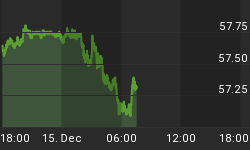It has been 7 weeks since the S&P500 made its highs, and it has been 7 weeks since we had analysts finding every reason under the sun why this is a can't miss market? Ooops!
As I stated on April 23, 2010: "one of the aspects about this cyclical bull market rally has been the ability of the bulls to extrapolate into the future the meaning of higher prices. The stock market is up, so it must mean something good. In my opinion, market participants are looking for reasons as to why the market is higher, and they selectively apply what they want to validate that position."
It was my belief that analysts love affair with market breadth was just such a thing. A fair indicator that sometimes works and sometimes doesn't, and for the most part, breadth adds little to the information that I can obtain from price itself. There were all these wonderful, can't miss signals which you can read about here and here. It is almost comical the lengths people go to explain the unexplainable.
What got me thinking about market breadth this weekend was several articles where I read about how terrible market breadth has been and in fact, the way I read these articles (here and here), we were just one banana peel away from a market crash. That could be but there is no way of predicting this from market breadth or any other data that I know of.
Also I want to take a minute and push one of my own things: market sentiment. On April 21, 2010, I wrote about the Rydex Bull/ Bear ratio, which is the indicator I highlight in the weekly report on sentiment. With the indicator above a 60% value, I stated: "The indicator moves above 58%; you go short; by the time the next bull signal arrives it is unlikely that you would have lost more than 2% of your equity, and it is very likely that you would have added to your equity (as 5 out of 11 trades had gains > 5%); there is a better probability of the trade turning out a winner....It is evidence such as this that suggests to me that the market is a better short than long. I have no reason to believe that the cycle of fear and greed is broken, and if this plays out as expected, the market should be trading lower by the time the next bull signal arrives." This turned out to be the true.
Luck? Maybe. However, the observation was based upon the data -- all the data across various market environments.
So what now? Our next bullish signal has arrived, and the market is struggling to find a bottom. Bearish market sentiment is not a guarantee that we will see higher prices, but if I were to pick a spot of when I would like to put my money to work it would be in betting against the consensus opinion. Of course, this isn't done with disregard for risk, and I have suggested several ways to get in and out of the market, and most importantly, I have discussed the significance of a failed signal.
As far as market breadth is concerned, I will let those prognosticators continue to prognosticate utilizing data that sometimes works and sometimes doesn't.
TheTechnicalTake now offers Premium Content based upon the Rydex asset data. As you can see from our April 21, 2010 article, this data continues to serve as a useful market timing tool. More importantly, it has us positioned with acceptable and identifiable risk. The Premium Content is a daily service with commentary, and the cost is 40 cents per trading day!!!
To subscribe click: SUBSCRIBE
To view a sample report: REPORT
















